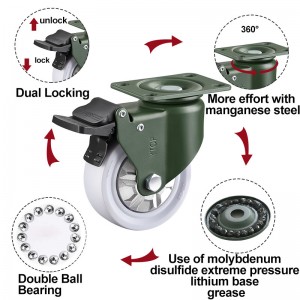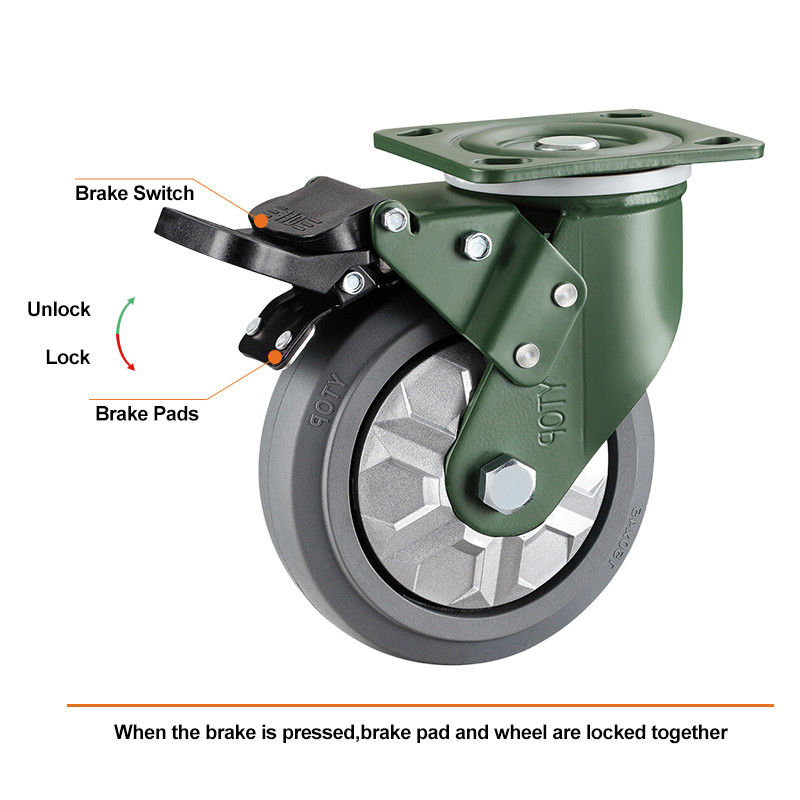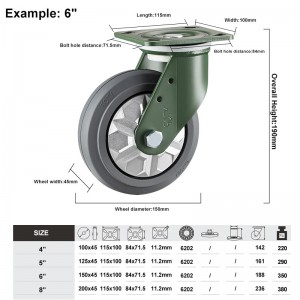In our daily life, casters are a common accessory, widely used in various furniture, tools and equipment. Among them, PP casters and TPR casters are two common types. This article will introduce the difference between PP casters and TPR casters in detail.
I. Material Differences
PP casters are mainly made of polypropylene material, while TPR casters are made of thermoplastic rubber material. The nature and characteristics of these two materials are very different.
Polypropylene (PP): Polypropylene is a semi-crystalline thermoplastic, with high impact resistance and chemical resistance, and easy to process.PP casters usually have high hardness and strength, suitable for occasions requiring high load capacity.
Thermoplastic rubber (TPR): thermoplastic rubber is a kind of thermoplastic with rubber elasticity, good flexibility and wear resistance, TPR casters usually have a softer texture, suitable for occasions that require cushioning and silence.
Second, performance characteristics
Abrasion Resistance: The abrasion resistance of TPR casters is superior to that of PP casters because it has a softer surface that adapts better to the ground.
Impact resistance: Although PP casters have better impact resistance, in some cases, TPR casters may have superior impact resistance.
Processability: PP casters are easy to process and can be injection molded at high temperatures. TPR casters are less processable and usually require the use of secondary injection molding.
Price: Typically, TPR casters are more expensive than PP casters because of the more complex production process.
Application
PP casters: suitable for occasions that require high load carrying capacity and high wear resistance, such as heavy equipment, shelves, etc.
TPR casters: suitable for the need for good flexibility, good impact resistance, wear resistance, such as medical equipment, laboratory equipment.
Post time: Apr-07-2024



